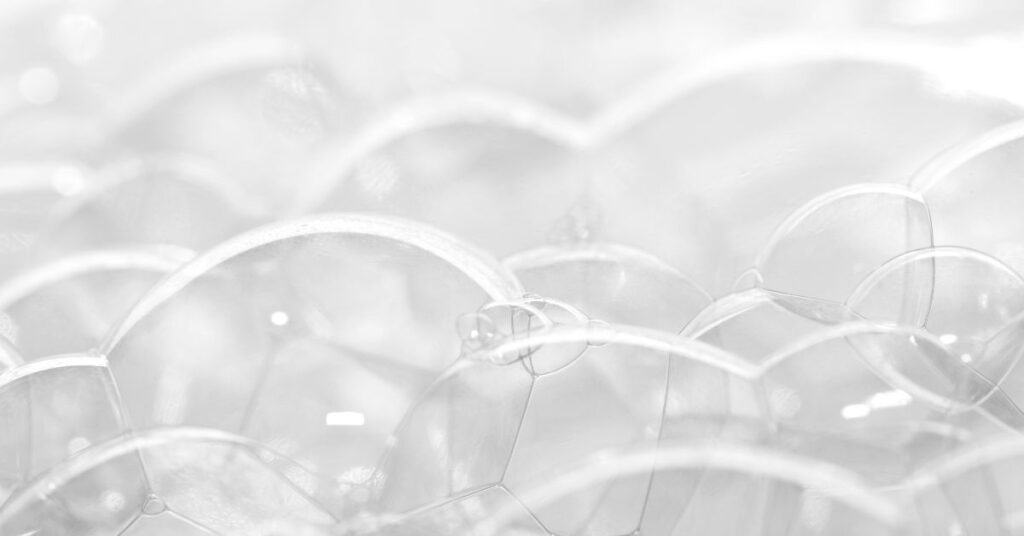Table of Contents
- What Happens When A Soap Bubble Is Given An Electric Charge?
- Is It True That When A Soap Bubble Is Charged, It contracts?
- Is It true That When A Soap Bubble Is Given A Negative Charge, Its Size
- When A Soap Bubble Is Given A Negative Charge. How Does Its Radius Increase?
- Are Soap Bubbles Positive or Negative?
- Final Thought
Are you curious in the effects of applying an electric charge to a soap bubble? From what I’ve seen when we charge a soap bubble, it will have either a net positive or negative charge.
Because charges that are similar push against each other, the bubble will tend to get bigger. But that’s not all. What oil makes soap lather?
As you read on, I’ll tell you more about what happens when you charge a soap bubble with electricity.
Now, let’s get started.
What Happens When A Soap Bubble Is Given An Electric Charge?
If you put an electric charge on a soap bubble, the bubble will get bigger. The charge will be spread out evenly on the bubble’s surface.
Second, the bubble will get more significant because the electric force between the charged particles that are evenly spread on it makes them push away from each other.
This is how it works:
When a soap bubble is charged, positive or negative, the other charges push back against the new charges. That’s why they usually move out. Because of this, the bubble gets more significant.
Since molecules are only on the surface of a soap bubble, we can say that when we charge the bubble, the charge will only be spread out on the surface where the molecules are.
When molecules get charged, their tendency to attract and repel each other increases.
Since we only charge one type of molecule on the surface, all the molecules will start repelling each other because they have the same charge.
This will cause the bubble’s radius to grow, and the bubble will become more prominent.
This means that if we give a soap bubble a charge, it will expand, and its radius will get bigger.
Is It True That When A Soap Bubble Is Charged, It contracts?
Yes. The expansion of a soap bubble that has been charged results in a reduction in the surface tension, or more specifically, a reduction in the surface tension.
The opposite is true when it comes to applying an electric charge to a soap bubble; depending on the circumstances, the bubble will take on a negative or positive charge due to the attraction between charges that are similar.
Is It true That When A Soap Bubble Is Given A Negative Charge, Its Size
Yes. Because of the ionic similarities between the two types of bubbles, this phenomenon can occur in both positively and negatively charged bubbles.
Therefore, It is possible to conclude that the radius of the soap bubble will rise whether it is given a positive or negative charge.
Then, the charged particles equally dispersed on the bubble will cause them to reject each other owing to the electrostatic force, which will, therefore, cause the bubble to expand.
When A Soap Bubble Is Given A Negative Charge. How Does Its Radius Increase?
A bubble of soap has two surfaces. Its two sides become negatively charged if it is given a negative charge.
As a result of similar charges, there will be a repulsion between two surfaces. As a result, its radius grows.
Similarly, there is a balance between positive and negative charges in an uncharged soap bubble.
The equilibrium is destroyed when the bubble’s surface has similar charges—in this example, negative charges.
The charges begin to resist one another to restore this lost balance. The bubble’s surface area will ultimately rise due to these charges. I’m hoping you can picture what’s going on.
The bubble grows, and the radius increases as the surface area increases.
It should be noted that the bubble’s volume and surface area are closely correlated with the cube and square roots of the respective radiuses.
Are Soap Bubbles Positive or Negative?
At first, a soap bubble is neutrally charged. Now, if the soap bubble’s surface has a negative charge, it is deposited there.
According to the rule of electrostatics, negative electrons will repel one another. The soap bubble’s surface area grows because the forces still act on one another.
Nevertheless, significant scientific attempts were made to solve this puzzle. In 1969, Exerowa was the first to investigate how the pH level affected the air/water interface’s surface potential.
She determined that the bubbles’ isoelectric point (I.E.P.) is at pH ≈ 4 and verified that the bubbles are negatively charged.
She thus postulated that the bubbles are negatively charged due to the O.H.- ions adhering to their surface.
Final Thought
Now that we have established when a soap bubble is given an electric charge, the correct equation for the force per unit area on the bubble is 1 2, where is the field at the bubble’s outer surface.
This explains why the pressures acting on various areas point in different directions. To calculate the total force operating on the hemisphere, multiply the pressure by the area of a circle with a radius equal to that of the hemisphere.
This can be calculated by integrating across the hemisphere in spherical coordinates or by considering the forces acting on the globe’s curved and flat surfaces.



